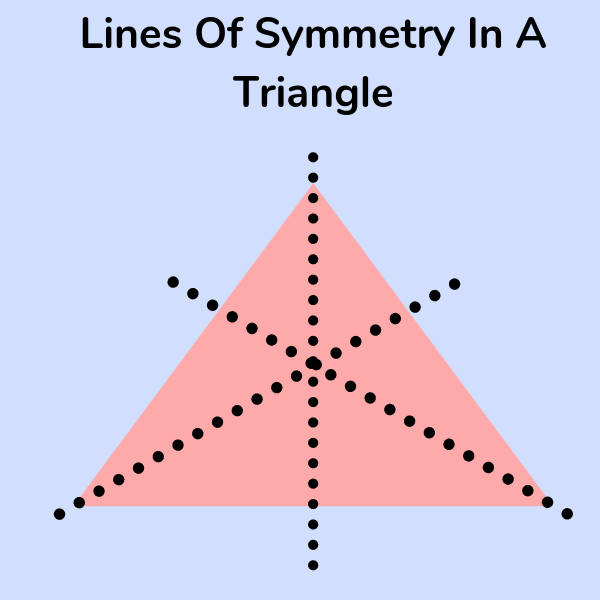

Four symmetry lines, two diagonals, and two line segments connecting the mid-points of opposite sides make up a square. Lines of Symmetry of a Square: A square is a quadrilateral with all of its sides equal and each of its angles being a right angle which is 90 degrees. It features three symmetry lines that run through its three medians. Let’s have a look at the symmetry lines of some regular polygons.Įquilateral Triangle Symmetry Lines: Lines of symmetry in an equilateral triangle: Each angle of an equilateral triangle is 60 degrees, and all of its sides have the same length. There are various figures in which there are more than two symmetry lines. Divide them as per their lines of symmetry that is vertical, horizontal, no line of symmetry.Īlphabets with vertical lines of symmetry: A, H, I, M, O, T, U, V, W, X, YĪlphabets with horizontal lines of symmetry: B, C, D, E, H, I, K, O, XĪlphabets with no line of symmetry: F, G, J, N, P, Q, R, S, Z. Make a list of lines of symmetry in Alphabets from A to Z. The equilateral triangle has three lines of symmetry as all of its three sides are equal.Ĩ. Can you draw a triangle with three lines of symmetry?Īnswer: Yes, an equilateral triangle. Can one draw a triangle having one line of symmetry?Īnswer: Yes, an Isosceles triangle has one line of symmetry as both its sides are equal.ħ. (i) In figure I, there are 3 lines of SymmetryĦ. (h) In figure H, there are no lines of symmetry. (g) In figure G, there are no lines of Symmetry. (f) In figure F, there are 6 lines of symmetry. (e) In figure E, there are 6 lines of symmetry. (d) In figure D, there are no lines of symmetry. (c) In Figure C, there are four lines of symmetry. (b) In Figure B, there are four lines of symmetry. (a) In figure A, there are four lines of symmetry. Identify the mirror line in the figure given below?

Give four examples of symmetrical objects from your home or at school?Īnswer: Inkpot, Notebook, Glass, and Backboard.Ģ. You can also observe the fruits and vegetables around and try to find the line of symmetry of these various objects.ġ. One can also go to a supermarket and observe the lines of symmetry of different objects such as boxes, packages, containers, etc. When you open the cutout picture, you will notice that the design you made also has two lines of symmetry. Now, you can also draw a picture and cut the same. Take a piece of A4 size of paper, and hold it vertically to get two equal halves. To Understand the Concept of Symmetry, let us Take up an Activity You can try this with a piece of paper as well. But if you draw a diagonal line from A to D, you can see that the sides will not match. In this figure, you can see that the rectangle is divided into equal parts vertically and horizontally. The rectangle can only have a vertical and horizontal line of symmetry. An hourglass is also an example of two lines of symmetry.Ī rectangle does not have a diagonal line of symmetry as opposed to a square as its sides are not the same. Letters such as H and X also have two lines of symmetry. Two lines of symmetry can be a combination of vertical, diagonal, or horizontal lines. A rhombus also has two lines of symmetry. A rectangle can be divided vertically, horizontally, or diagonally to get the two symmetrical parts. The rectangle is an example of two lines of symmetry. These shapes are said to have two lines of symmetry. Some figures can be divided into two equal parts with two lines. A pentagon has five 5 lines of symmetry and a hexagon has six lines of symmetry. An isosceles triangle has one line of symmetry as both of its sides are equal. The equilateral triangle has three lines of symmetry whereas a scalene triangle does not have any line of symmetry as its all sides are different. A square is said to have four lines of symmetry as its sides are the same, so the diagonal lines and vertical as well as horizontal lines divide a square. If a figure or shape does not have a line of symmetry, it indicates that the shape or figure is asymmetrical.įew shapes or figures have one line of symmetry, two lines of symmetry, or multiple lines of symmetry.Ī circle can have an infinite number of lines of symmetry as it can be folded at any diameter to get the symmetrical halves. It is very important to understand the following points before studying the line of symmetry in detail. There are some figures wherein the lines of symmetry can be more than one. Hence, we can say that the heart shape has one and only one line of Symmetry. You cannot fold the heart further to get the perfect symmetry. In an asymmetrical figure, none of the sides of the shape is equal. A figure which does not have any similarity between two halves is known as an asymmetrical figure.


 0 kommentar(er)
0 kommentar(er)
